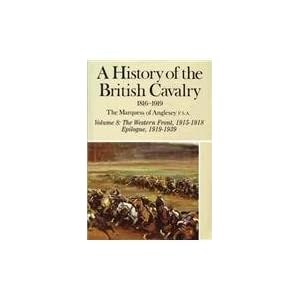
A
History of the British Cavalry 1816-1919 Volume
8: The Western Front, 1915-1919 by The Marquess of Anglesey, FSA.
Lord Anglesey, a very prominent
historian, has had many interests besides the cavalry. When he set out to write
Volume 8 of his History, he was of
the common opinion that cavalry had seen its best days and long outlived its
usefulness by the onset of trench warfare.
In the course of his research he
came to change his opinion. In this regard his conclusions are similar to those
of David Kenyon (Horsemen in No Man’s
Land; see my blog post of 12 January 2013).
In the preface Anglesey writes as
follows: “More important than any of this (referring to relatively light
cavalry casualty figures early in the Great War) was the truly vital part
played by the mounted troops of the BEF at the worst moments of crisis. Acting
as a ‘fire brigade’ they time and again stopped up gaps as only the sole
speedily movable element of the force could do. It is not too much to claim
that on a number of occasions catastrophes of major dimensions were averted by
such action.”
It is also sadly true, as posited
by David Kenyon, that by the end of the war the numbers of cavalry killed and
wounded were right up there with the infantry.


 Subtitled "British Cavalry & Trench Warfare 1914-1918", Kenyon's book is a must-read for people even casually interested in the British cavalry--which, in the Great War, included the Canadian Cavalry Brigade.
Subtitled "British Cavalry & Trench Warfare 1914-1918", Kenyon's book is a must-read for people even casually interested in the British cavalry--which, in the Great War, included the Canadian Cavalry Brigade.